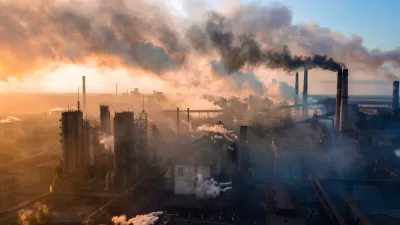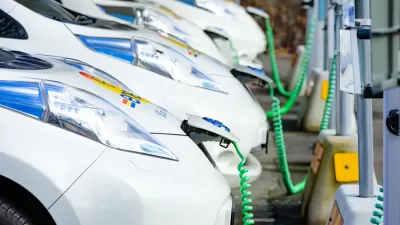Burj Dubai (now renamed as the Burj Khalifa), the world's tallest building, opened today in Dubai. But with the recent credit crunch and economic recession, the extravagant monument to boom times sits mostly empty.
The building was recently renamed the Burj Khalifa after the ruler of neighboring Abu Dhabi, which has come to Dubai's rescue during tough economic times.
"Designed by Adrian Smith, a former partner in the Chicago office of Skidmore, Owings & Merrill, the Burj Dubai is an impossible-to-miss sign of the degree to which architectural ambition -- at least the kind that can be measured in feet or number of stories -- has migrated in recent years from North America and Europe to Asia and the Middle East. It is roughly as tall as the World Trade Center towers piled one atop the other. Its closest competition is Toronto's CN Tower, which is not really a building at all, holding only satellites and observation decks, and is in any case nearly 900 feet shorter.
Monday's ribbon-cutting, though, could hardly come at a more awkward time. Dubai, the most populous member of the United Arab Emirates, continues to deal with a massive real estate collapse that has sent shock waves through financial markets around the world and forced the ambitious city-state, in a significant blow to its pride, to seek repeated billion-dollar bailouts from neighboring Abu Dhabi. Conceived at the height of local optimism about Dubai's place in the region and the world, this seemingly endless bean-stock tower, which holds an Armani Hotel on its lower floors with apartments and offices above, has flooded Dubai with a good deal more residential and commercial space than the market can possibly bear."
Christopher Hawthorne of the Los Angeles Times reports that the building remains mostly vacant. And despite the fact that its 900 apartments have been bought, most of them were bought as investments years ago during more prosperous times. His essay also looks at emptiness in architecture, a concept Americans are having a tough time wrapping their heads around.
FULL STORY: The Burj Dubai and architecture's vacant stare

Study: Maui’s Plan to Convert Vacation Rentals to Long-Term Housing Could Cause Nearly $1 Billion Economic Loss
The plan would reduce visitor accommodation by 25,% resulting in 1,900 jobs lost.

North Texas Transit Leaders Tout Benefits of TOD for Growing Region
At a summit focused on transit-oriented development, policymakers discussed how North Texas’ expanded light rail system can serve as a tool for economic growth.

Why Should We Subsidize Public Transportation?
Many public transit agencies face financial stress due to rising costs, declining fare revenue, and declining subsidies. Transit advocates must provide a strong business case for increasing public transit funding.

How to Make US Trains Faster
Changes to boarding platforms and a switch to electric trains could improve U.S. passenger rail service without the added cost of high-speed rail.

Columbia’s Revitalized ‘Loop’ Is a Hub for Local Entrepreneurs
A focus on small businesses is helping a commercial corridor in Columbia, Missouri thrive.

Invasive Insect Threatens Minnesota’s Ash Forests
The Emerald Ash Borer is a rapidly spreading invasive pest threatening Minnesota’s ash trees, and homeowners are encouraged to plant diverse replacement species, avoid moving ash firewood, and monitor for signs of infestation.
Urban Design for Planners 1: Software Tools
This six-course series explores essential urban design concepts using open source software and equips planners with the tools they need to participate fully in the urban design process.
Planning for Universal Design
Learn the tools for implementing Universal Design in planning regulations.
Ascent Environmental
Borough of Carlisle
Institute for Housing and Urban Development Studies (IHS)
City of Grandview
Harvard GSD Executive Education
Toledo-Lucas County Plan Commissions
Salt Lake City
NYU Wagner Graduate School of Public Service




























